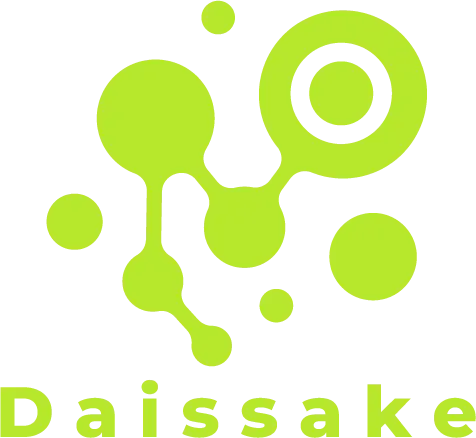In a world where technological challenges are on the rise and business needs continue to evolve, choosing the right payment model is a critical step toward achieving success and sustainability in web design. While a monthly subscription offers regular updates and ongoing technical support, a one-time payment provides the benefit of a fixed cost and long-term investment without recurring financial commitments.
This comprehensive comparison highlights the fundamental differences between the two models, affecting operational efficiency, maintenance costs, and the overall user experience. It will help you understand these key distinctions, allowing you to select the option that best suits your needs and budget, and ultimately make a strategic decision that enhances your digital presence and achieves your business objectives.
The Monthly Subscription Model
The monthly subscription model involves paying a fixed amount each month in exchange for continuous web design services.
How It Works
- The client pays a monthly fee that grants access to design services, updates, and regular maintenance.
- This ensures that the website remains up-to-date and secure in line with ongoing technological advancements.
Main Benefits
- Continuous Updates: The website receives periodic updates that enhance performance and add new features, keeping it competitive in the market.
- Ongoing Technical Support: Subscriptions typically include technical support to quickly and effectively resolve any issues.
- Budget Flexibility: Spreading the cost over monthly payments reduces the need for a large initial investment, making it easier to manage the budget.
Potential Drawbacks
- Accumulated Costs: Over time, the monthly fees may add up to an amount greater than the one-time payment option.
- Dependency on the Provider: The client relies on the continuous service of the provider, which may pose issues if there are changes in company policies or if the service is discontinued.
The One-Time Payment Model
The one-time payment model is based on paying a specific amount upfront to obtain the website design without any recurring financial obligations after the project is completed.
How It Works
- The client pays a fixed fee before the project begins.
- The work is then executed according to the agreed-upon specifications, and upon completion, the website is delivered as a final product without further charges for basic design services.
Main Benefits
- Pre-determined Cost: This model provides clarity in budgeting, as the client knows the total cost upfront without any future surprises.
- No Ongoing Subscription Fees: Once the payment is made, no additional monthly or yearly fees are required, making it ideal for those who prefer limited financial commitments.
- Full Ownership of the Website: The client receives complete ownership of the website, allowing for independent management and development without restrictions tied to a continuous subscription.
Potential Drawbacks
- Lack of Regular Updates: One-time payments typically do not cover ongoing updates or routine maintenance; future updates may require additional investments.
- Future Modification Costs: If the client wishes to make modifications or enhancements later, additional fees may be necessary, potentially affecting the overall budget over time.
Detailed Comparison of Costs and Benefits
Monthly Subscription
- Costs:
- A fixed monthly fee that reduces the initial financial burden.
- Over time, the cumulative costs may exceed those of a one-time payment.
- Benefits:
- Regular updates ensure access to the latest features and technologies without additional investments.
- Includes technical support and routine maintenance to keep the website stable and secure.
- Budget flexibility through distributed monthly payments.
- Potential Drawbacks:
- A long-term financial commitment.
- Possibility of price increases over time.
One-Time Payment
- Costs:
- An upfront investment that requires a larger initial budget.
- A fixed cost with no recurring fees for the basic design.
- Benefits:
- Complete ownership of the website with no future financial obligations related to design.
- Clear and predetermined overall cost.
- Potential Drawbacks:
- Does not typically include ongoing maintenance or updates, which might require additional investments later.
- Potential for extra costs if future modifications or updates are needed.
Additional Comparison Points
- Budget Flexibility:
- Monthly subscriptions are ideal for those who prefer to spread out their expenses.
- One-time payments suit clients with a fixed budget who prefer a lump-sum investment.
- Maintenance and Technical Support:
- Monthly subscriptions offer ongoing support and regular maintenance.
- One-time payments may require additional costs for future maintenance and updates.
- Future Updates and Development:
- Monthly subscriptions ensure continuous updates in line with technological advancements.
- One-time payment models might necessitate extra investments when updates or enhancements are needed.
Flexibility and Updates: What Each Option Offers
Monthly Subscription
- High Flexibility:
- Enables regular updates and modifications to the website in accordance with evolving technological trends or business requirements.
- New features can be added and design adjustments made periodically without the need for new agreements or significant extra payments.
- Regular Updates:
- Typically includes a subscription contract that covers ongoing security, technical, and design updates.
- Enhances performance and ensures the website remains responsive to continual changes in the online environment.
One-Time Payment
- Stability of the Basic Design:
- The website is delivered as a final product with a specific design and initial updates, often including a short period of support or maintenance.
- Offers stability in design and cost, with no recurring monthly fees.
- Limited Flexibility for Future Updates:
- Subsequent updates or modifications usually require additional agreements or separate investments.
- Keeping pace with technological advancements or changing design requirements may necessitate extra funds.
Customer Support and Maintenance: Strengths and Weaknesse
Monthly Subscription Model
Strengths:
- Continuous technical support available throughout the week, allowing for quick problem resolution.
- Regular maintenance and updates help keep the website secure and operating at optimal performance.
- Fast response to changes, enabling easy addition of features and improvements without complex procedures.
Weaknesses:
- The client is dependent on the provider’s ongoing service; any changes or interruptions in service can lead to issues.
- Monthly costs may accumulate over time, potentially becoming a financial burden in the long run.
One-Time Payment Model
Strengths:
- Delivery of a final product with no ongoing financial obligations.
- Full ownership of the website allows for future modifications and development without external constraints.
Weaknesses:
- Limited ongoing technical support and routine maintenance, which may necessitate additional investments if issues arise.
- Additional costs may incur for future updates or modifications after the website has been delivered.
7. Analysis of Case Studies and User Experiences
Analyzing real-world user experiences reveals success stories and challenges associated with each model:
7.1 Experiences with the Monthly Subscription Model
- Success Stories:
- Many small and medium-sized companies have benefited from regular updates and continuous technical support, helping them keep pace with technological advancements without substantial extra investments.
- Consistent technical support has instilled confidence and improved overall website performance.
- Challenges:
- Users have noted that monthly costs can accumulate, sometimes exceeding the total cost of a one-time payment model.
- Dependency on the provider’s ongoing service can pose problems if there are changes in the provider’s policies or if the service is interrupted.
Experiences with the One-Time Payment Model
- Success Stories:
- Many clients appreciate the clear upfront cost and receiving a final product with full website ownership, which allows for freedom in future modifications.
- The one-time payment model can accelerate project completion, especially for projects that do not require continuous updates.
- Challenges:
- The absence of ongoing support and routine maintenance has led some users to face challenges when future updates or technical issues arise.
- Additional investments may be required for subsequent modifications or enhancements not covered by the initial payment.
Lessons Learned and Practical Tips
- Match the Model to Your Needs:
- Analyze the scale and nature of your project to determine which model aligns best with your long-term strategy.
- Evaluate the Total Cost:
- Consider not only the initial or monthly costs but also the overall expenses in the long run.
- Learn from Others’ Experiences:
- Reading reviews and case studies from previous users can provide valuable insights into the pros and cons of each model.
Tips for Choosing the Option that Best Suits Your Needs
- Define Your Project Requirements:
- Assess the type of website and the features you need—whether it is dynamic and requires regular updates or a static site that needs a final stable design.
- Evaluate Your Budget:
- Consider whether you can manage monthly payments or prefer a larger upfront investment. Calculate the total long-term cost to determine the best fit for your financial situation.
- Assess the Level of Support and Maintenance Required:
- If ongoing technical support and routine maintenance are priorities, the monthly subscription may be more appropriate. Conversely, if you prefer full ownership without continuous fees, the one-time payment might be a better choice.
- Consider Future Updates and Flexibility:
- Ensure that your chosen model allows for easy modifications and updates as your website evolves.
- Review Contract Terms:
- Carefully read the service terms and contractual obligations to avoid unexpected costs in the future.
- Learn from User Experiences:
- Look into success stories and challenges encountered by others who have chosen each model.
Conclusion and Final Thoughts: The Optimal Decision for Web Design
Ultimately, choosing the right payment model for web design depends on a mix of technical needs, financial considerations, and your strategic goals. If continuous updates and immediate technical support are critical to your operations, the monthly subscription offers high flexibility and comprehensive solutions that keep pace with evolving technology. However, if you prefer a clearly defined cost and full ownership of your website without ongoing fees, the one-time payment model may be the best option.
By carefully assessing your budget, website requirements, and the level of support needed, you can make an informed decision that aligns with your long-term plans. The optimal choice is one that balances cost with technical benefits, meeting your actual needs and enhancing your digital presence.

